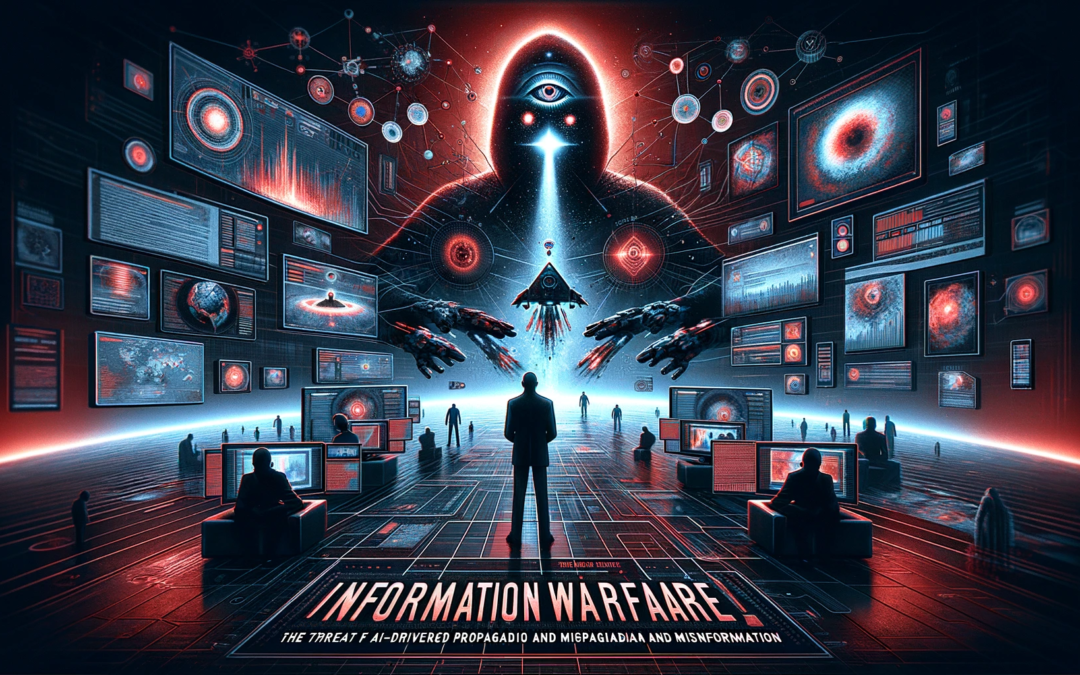Welcome to the age where artificial intelligence (AI) has the power to shape reality, manipulate public opinion, and even destabilize governments. As AI technologies continue to advance, the potential for AI-driven propaganda and misinformation to wreak havoc on a global scale cannot be underestimated. In this blog post, we will delve into the dark underbelly of AI, exploring how it can be used to spread false information, disrupt democratic processes, and undermine the very fabric of society.
AI in the Manipulation of Information
AI has become a double-edged sword in the realm of information dissemination. On one hand, it has the potential to revolutionize the way we access and consume news. On the other hand, it can be used to create and spread disinformation with alarming ease. Deepfakes, AI-generated news articles, and social media bots are just a few of the tools in the AI propagandist’s arsenal. These technologies can blur the line between fact and fiction, making it increasingly difficult for the average person to discern truth from lies.
Real-world examples of AI manipulation are already surfacing. From AI-generated political ads to viral misinformation campaigns, AI is being used to sway public opinion and manipulate the narrative. The implications of this are far-reaching, as it undermines the very foundation of a well-informed society.
Impact on Democracy and Governance
In a world where information is power, AI-driven misinformation poses a significant threat to democratic processes. Elections can be influenced, public policy debates can be swayed, and trust in institutions can be eroded. The rise of AI-driven propaganda has the potential to disrupt the delicate balance of power in democratic societies.
Combatting AI-generated false information is not an easy task. Governments and societies are faced with the challenge of distinguishing fact from fiction in an increasingly complex information landscape. The responsibility lies not only with individuals to be critical consumers of information, but also with tech companies and governments to develop effective strategies to counter the spread of AI-driven propaganda.
Psychological and Social Effects
AI-driven misinformation doesn’t just manipulate information; it manipulates people. By exploiting cognitive biases and emotional triggers, AI propaganda can deepen societal divisions and increase polarization. Objective truth becomes a casualty in the battle for hearts and minds.
The consequences of widespread misinformation are profound. Trust in institutions crumbles, social cohesion weakens, and the very fabric of society is threatened. We must recognize the psychological and social effects of AI-driven propaganda and work towards a more resilient and discerning society.
Global Stability and Security Risks
AI-driven misinformation is not just a domestic concern; it has the potential to destabilize the global order. State-sponsored AI propaganda campaigns can incite conflicts, exacerbate international tensions, and undermine diplomatic efforts. The risks associated with AI in the realm of information warfare are not to be taken lightly.
As the world becomes increasingly interconnected, the need for international collaboration to address these risks becomes more urgent. The global community must come together to develop strategies and frameworks to mitigate the destabilizing effects of AI-driven misinformation.
Strategies for Mitigation and Control
Addressing the threat of AI-driven propaganda and misinformation requires a multi-faceted approach. Technological solutions, such as AI-powered fact-checking algorithms, can help identify and debunk false information. Media literacy campaigns can empower individuals to critically evaluate the information they consume. Regulatory approaches can ensure that AI technologies are used responsibly and ethically.
However, no single solution is sufficient. A collaborative effort involving governments, tech companies, and civil society is essential. By working together, we can navigate the complex challenges posed by AI in the information sphere and safeguard the integrity of information and democratic values.
Conclusion
The rise of AI-driven propaganda and misinformation is a pressing global concern. As AI technologies continue to advance, the potential for manipulation and control on a global scale becomes more pronounced. It is imperative that we recognize the dangers and take proactive steps to counter them.
By fostering a critical conversation, investing in technological solutions, and promoting media literacy, we can build a more resilient society that is immune to the influence of AI-driven propaganda. The time to act is now, for the integrity of information and the preservation of democratic values hang in the balance.
Visual Elements:
– Powerful and evocative images that reflect the themes of AI-driven misinformation and information warfare.
– Infographics to illustrate the mechanics of AI manipulation of information and its impacts.
SEO Elements:
Keywords: AI misinformation, AI propaganda threat, information warfare and AI.
Meta description: Explore the potential threats of AI-driven propaganda and misinformation, and the urgent need for a proactive and collaborative approach to counter these challenges.
This blog post aims to shed light on the potential dangers of AI in manipulating information, and spark a critical conversation on how to navigate and counter these threats. It is crucial that we remain vigilant and proactive in the face of AI-driven propaganda and misinformation to preserve the integrity of information and democratic values.










